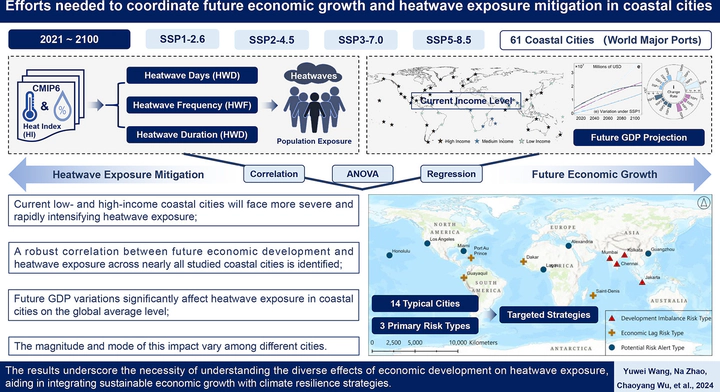Efforts needed to coordinate future economic growth and heatwave exposure mitigation in coastal cities

Abstract
The increasing frequency and severity of heatwaves present significant environmental and socio-economic challenges. While both rapid economic expansion and sluggish growth could intensify heatwave risks, current research predominantly examines the heatwaves’ impacts on economic performance, overlooking how economic development influences heatwave risks. Coastal cities, particularly major ports, are pivotal in the global economy and are anticipated to experience the greatest increase in heatwave exposure (0.81 to 2.31 × 104 person-times year-1 under SSP1–2.6 to SSP5–8.5) relative to other urban areas. Quantifying population exposure in global coastal cities by 2100, we investigated the diverse effects of future economic development on heatwave exposure. A robust correlation between economic development and heatwave exposure was identified across nearly all studied coastal cities (the majority showing correlation coefficients > 0.8). GDP variations significantly affect heatwave exposure on the global average level; yet, the magnitude and mode of this impact vary among cities (P < 0.01, R2 = 0.90 on average). We highlighted 14 typical cities requiring special attention and defined three risk types: Development Imbalance Risk, Economic Lag Risk, and Potential Risk Alert, leading to possible targeted strategies for coordinated socio-economic and heatwave mitigation efforts. The results contribute to integrating sustainable economic growth with climate resilience strategies.